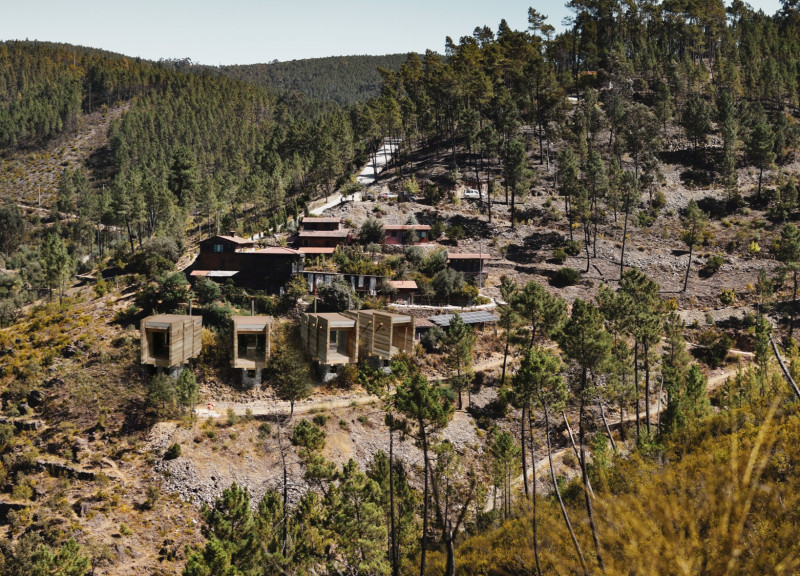5 key facts about this project
The design comprises a series of cabins placed in a valley landscape in northern Portugal. These cabins serve as wellness retreats that incorporate local architectural traditions, specifically inspired by the Avieiras stilt houses known for their wooden structures and stone chimneys. The design aims to create a connection between the built environment and nature, providing spaces that encourage tranquility and personal reflection.
Design Concept and Orientation
The philosophy behind the cabins is based on the idea that architecture should extend human experience and connection to the natural setting. Each cabin is oriented to face the valley, allowing for expansive views and promoting a sense of peace. The symmetrical shapes reflect the human form, reinforcing notions of balance and harmony in the design. This thoughtful positioning invites occupants to engage with the surrounding landscape, fostering a serene atmosphere.
Material Selection and Structural Elements
Wood stands out as the main material used in the construction of the cabins, reflecting traditional building practices while supporting sustainability. Timber is renewable and helps in capturing carbon, making it an important choice for this project. The cabins rest on local stone bases, which provide necessary support while creating a pleasing visual contrast with the wooden structures. Additionally, external fireplaces enhance comfort in the cooler months, contributing to the overall livability of each cabin.
Sustainability and Functional Features
Green roofs added to the cabins serve various purposes. They help insulate the structures and manage rainwater effectively. These roofs play a crucial role in reducing overheating during warmer weather. The design incorporates ventilation systems that allow fresh air to flow through the cabins naturally. Openable flaps and stack-effect windows utilize environmental conditions to enhance air quality and light within the interiors. This attention to functional features improves the living experience for occupants.
Symbolism and Elemental Representation
The cabins represent the four basic elements: earth, air, fire, and water, which are carefully integrated into both the design and spatial arrangement. This symbolism deepens the connection between the occupants and the natural environment, encouraging awareness and engagement. Features of the design promote interaction with these elements, creating an experience that is balanced and harmonious.
Large windows allow natural light to flood the interiors and can be adjusted to provide an unobstructed view of the valley. This design contemplation enhances the connection between the occupants and the surrounding landscape while inviting moments of reflection and tranquility.
























































